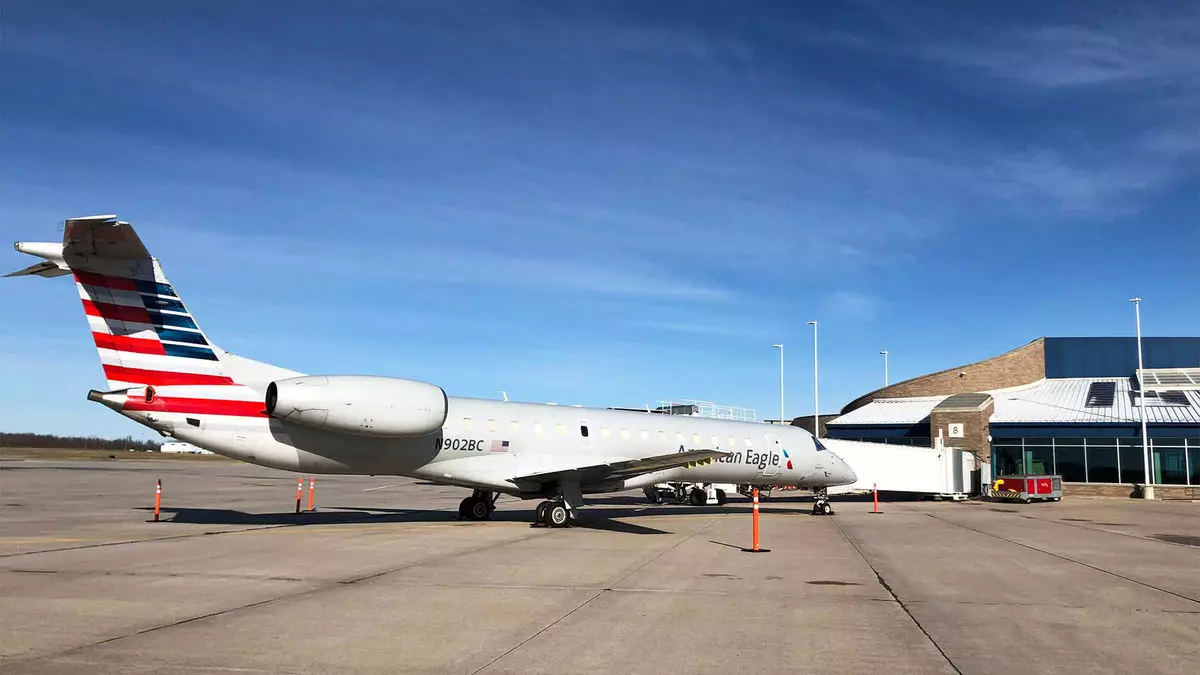The aftermath of the COVID-19 pandemic has reshaped the air travel landscape significantly, especially for small airports like Appleton Airport in northeast Wisconsin. This regional hub encountered a sharp decline in its air services in the years that followed the pandemic as major airlines scaled back operations due to a critical pilot shortage. However, a bright spot emerged in June when American Airlines initiated its first service linking Appleton to Dallas-Fort Worth, utilizing an American Eagle-branded regional jet—a strategic move that reflects the airport’s recovery trajectory.
Over the past year, American Airlines has made notable strides in augmenting its routes in Appleton, introducing two pivotal connections, including the much-anticipated route to Charlotte. Furthermore, competitors United and Delta have also expanded their regional services, enhancing the overall air connectivity of the airport. Such moves are significant not only for the airport but also for the Appleton metro area’s roughly 250,000 residents, who benefit from increased accessibility to broader interstate travel.
Despite the pandemic’s initial blow that resulted in a 31% decrease in major airline flights from October 2021 to October 2023, a glimmer of recovery has taken hold. As of now, the flight count from American, Delta, and United Airlines has surged back to 92% of pre-pandemic levels, with the seat count witnessing a growth of nearly 6%. This resurgence underscores a strategic pivot within regional air travel services as airlines progressively deploy larger aircraft and ramp up the frequency of their services.
The growth of 33% in major airline frequencies within a year—featuring additional Delta services to hubs in Minneapolis and Detroit, as well as increased United flights to Chicago O’Hare—signals a transformative phase for Appleton Airport. Jesse Funk, the airport’s air service and business development manager, asserts that these changes significantly enhance travel convenience for both business and leisure flyers alike, making it easier to reach desired destinations swiftly. The competitive landscape fostered by multiple airlines also helps keep ticket prices in check, benefiting passengers.
Appleton’s success story is not isolated; numerous small and medium-sized communities across the U.S. are simultaneously experiencing a renaissance in air travel. This improvement largely stems from airlines addressing the pilot shortage that had stunted regional capacity. According to recent data, American Airlines has ramped up regional aircraft flights by 14.9% year-over-year, with United and Delta closely following with 13.9% and 9.8% increases in their respective regional flights.
Delta’s president, Glen Hauenstein, indicated during a quarterly earnings call that the acute pilot shortage of the last two years is witnessing rapid alleviation. The gradual resumption of regional jet services marks a critical turnaround, following a tumultuous phase where utilization of the regional fleet plummeted. The optimistic forecast suggests that by next summer, airlines hope to achieve full operational capacity akin to 2019 levels, as recruitment efforts have intensified.
Concerns Amidst Positivity
Even as levels of regional flying improve, caution remains warranted, particularly as U.S. airlines adjust their long-term strategies. The Big Three—American, Delta, and United—are increasingly channeling resources toward mainline aircraft for more lucrative routes, which could mean reduced focus on regional service over time. Reports indicate that the number of regional flights still lags behind pre-pandemic levels, revealing an underlying tension between demand for regional services and strategic shifts towards mainline operations.
Furthermore, the Regional Airline Association’s annual report indicates a stark contrast between varying airport service levels. While larger regional airports demonstrate some growth, many smaller commercial airports are witnessing service declines, raising questions about the sustainability of this growing trend.
Planning for Future Growth
In Appleton, stakeholders are not resting on their recent achievements. With the air service landscape evolving continuously, the airport remains proactive in seeking further enhancements. Funk emphasizes that while they celebrate the resurgence, the goal is to continue seeking additional routes and partnerships to bolster the city’s connectivity. The momentum built over the past year serves not only to put Appleton Airport back on the map but to solidify its role as an essential gateway for a community eager to connect with the broader air travel network.
The resurgence in air travel at Appleton Airport illustrates the resilience of regional air services, shedding light on the significance of strategic growth management in reinforcing commuter connectivity in the wake of a global pandemic. The patterns emerging here may well pave the way for smaller airports nationwide, provided they navigate the intricate balance between competitive service levels and the overarching trends in air travel.


Leave a Reply